A Fire and An Alumnus
SPARK
New CSU Mountain Campus Research Initiative
by: Karina Puikkonen
May 6, 2021
Photo by William A. Cotton/CSU Photography
Sometimes the best ideas happen at the kitchen table.
Last fall, the 2020 Cameron Peak Fire had filled Fort Collins skies with smoke when Warner College of Natural Resources students Travis Croft and friends sat around their kitchen table. They were discussing what they could do for the forests burning around the Colorado State University Mountain Campus, a place that had become their classroom and playground.
“I was taking a wildfire behavior course, and it made me think more critically about the fire in our backyard,” Croft said. “It hit me that I could tap into this communal sense of the Warner community with its collective knowledge and resources to start a tree regeneration effort.”
The senior was just weeks away from graduation, having taken advantage of every opportunity he could find at CSU. Granted, this required extra time to complete a double major in Natural Resources Management and Ecosystem Science and Sustainability, but an additional year gave Croft the chance to be part of post-fire restoration efforts, something that would be beneficial to his Warner family for years to come.
Croft knew the CSU Mountain Campus area, having spent a month there as a student in the NR 220 course learning the ins-and-outs of natural resource management methods. He had also taken a natural resource sampling class from Wade Tinkham, an assistant professor in the Forest and Rangeland Stewardship (FRS) department. His initial thoughts involved personally planting trees for forest regeneration at the site. Croft crafted a CSU Sustainability Fund project proposal together with Tinkham and CSU Mountain Campus Director, Seth Webb.
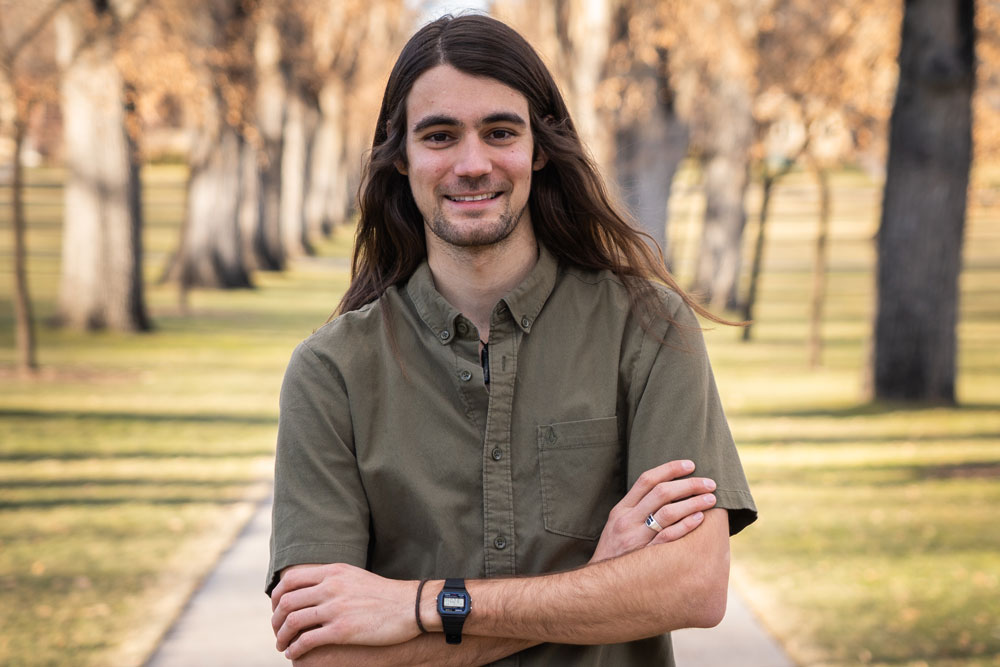
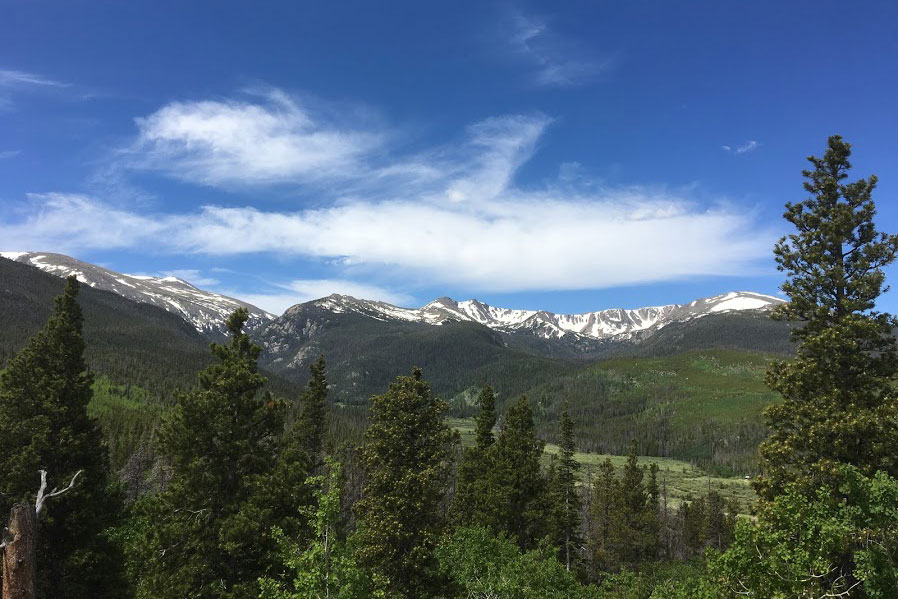
It’s been a whirlwind for Croft since last December when he received the sustainability grant and his bachelor’s degree, he said. He has combined his efforts with those that faculty members in the FRS department have been envisioning for CSU’s high-elevation campus.
“Over the last several months the project has evolved into something bigger that connects to broader opportunities for long-term research and monitoring across Warner College,” Croft said.
A serendipitous spark
Two years ago, faculty members in the Forest and Rangeland Stewardship department began leading Warner College discussions about possible research opportunities at CSU’s Mountain Campus. Once COVID-19 hit, the pandemic put these discussions on hold, but Croft’s project in tandem with the Cameron Peak Fire helped jumpstart them back up. Virtual discussions continued around kitchen tables. Wade Tinkham and Fire Ecologist Camille Stevens-Rumann in the FRS department saw Croft’s proposal about post-fire regeneration as part of their greater ecological research and teaching endeavor.
“The overall hope is to establish a research and management demonstration of how to study high elevation forest systems susceptible to climate change,” Tinkham said.
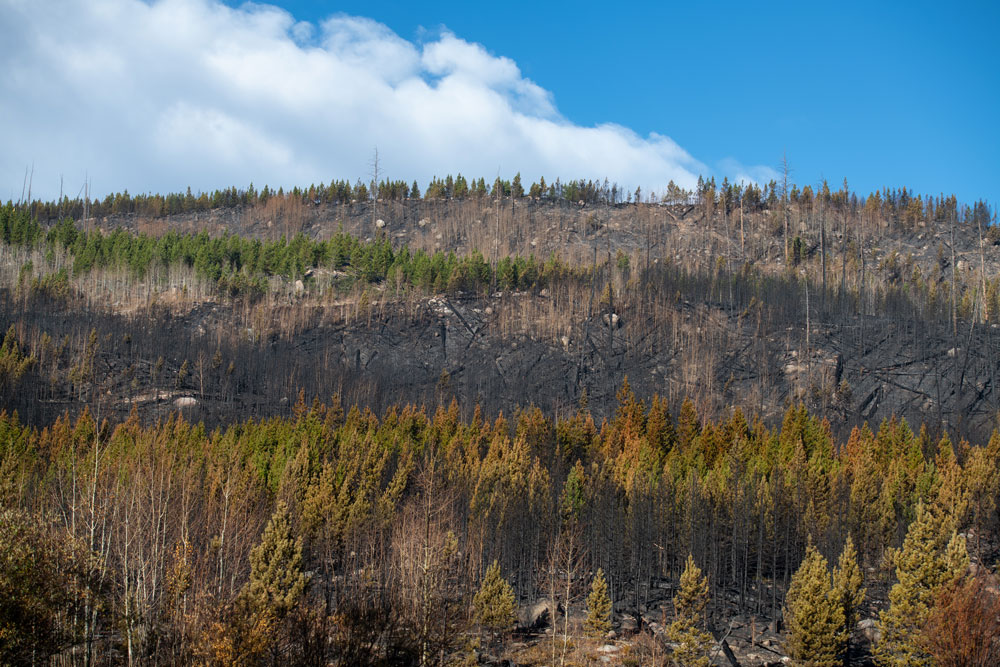
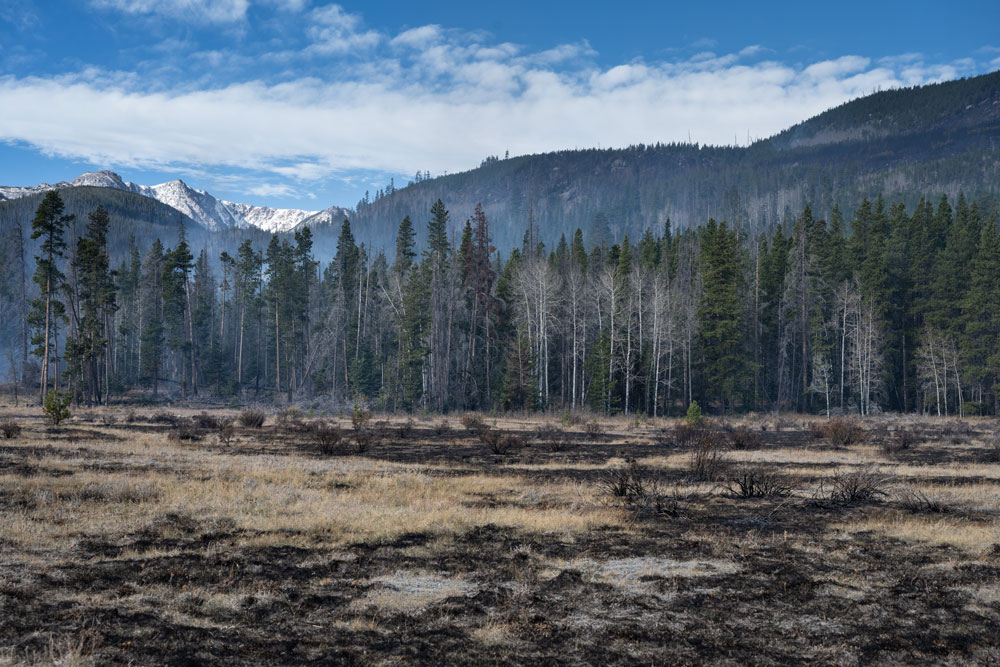
High-elevation forests have been understudied because they aren’t heavily managed, residing in wilderness areas that are often difficult to access. The 2020 Colorado wildfire season was unprecedented because it burned in forest types that have been minimally impacted by people or wildfires overall in recent decades.
CSU Mountain Campus offers a unique environment for research and monitoring because interactions between multiple disturbances can be openly studied. The 1994 Hourglass Fire burned around 1,700 acres in the surrounding forests, and now the Cameron Peak Fire reburned similar areas providing new research opportunities and challenges. Not to mention these same forests have also been hit with mountain pine and spruce beetle epidemics that swept through during the 25-year gap between the two fires.
“All these disturbances offer an opportunity to see how these places have adapted,” Stevens-Rumann said. “We want to see if the same kind of recovery we’ve seen since the Hourglass Fire will happen after the Cameron Peak Fire.”
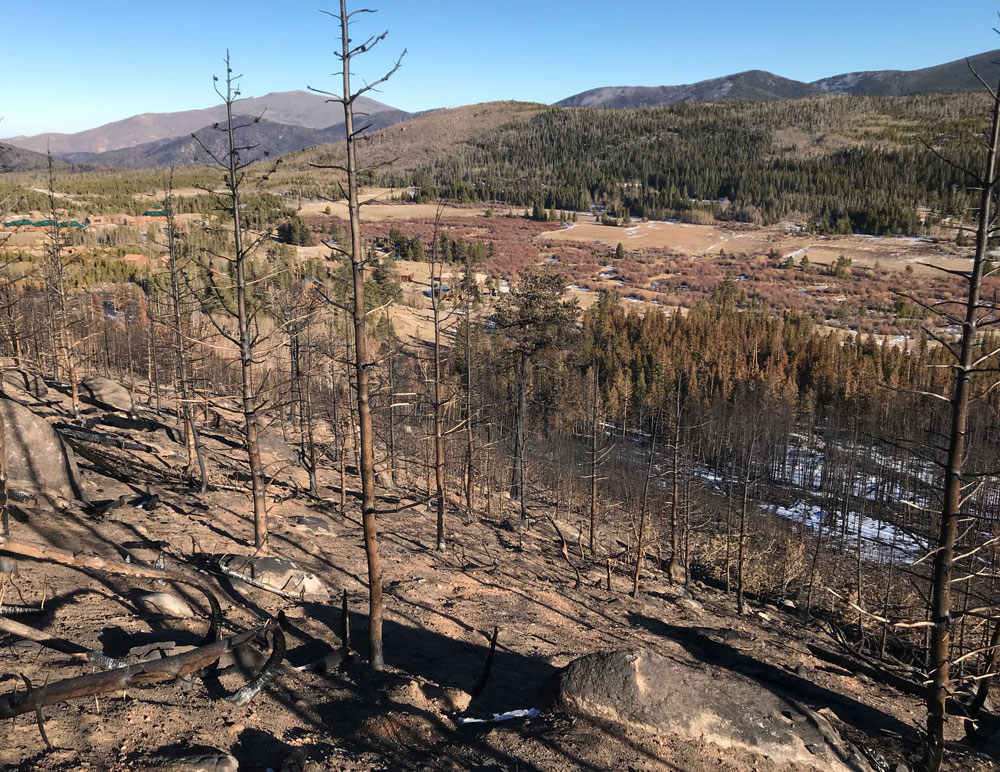
A long-term natural experiment
Travis Croft will become a senior technician on a field crew advised by multiple FRS department faculty members. The team will spend several weeks camping out at CSU Mountain Campus this May and June establishing experimental vegetation plots and collecting information about trees and understory plants. These areas will be used in long-term teaching and research ventures at the campus.
FRS faculty identified forest areas that burned once or twice in both high- and low-fire severities where the field crew will establish nearly 100 plots. Each plot will consist of four subplots with one control plot, and three others respectively planted with lodgepole pine saplings, ponderosa pine saplings, and an herbaceous seed mixture of forbs and native grasses. The field crew will collect the initial baseline data this first growing season post-fire.
Conducting the work this summer is critical to begin understanding post-fire vegetation responses. Future data collection efforts will be done by students during the summer once NR 220 and F 230 courses resume at the high-elevation campus after the pandemic. Students in capstone courses from various undergraduate programs across Warner College will also contribute to and use the data to explore the important role of disturbance in these forests. As an NR 220 and F 230 course instructor, Tinkham sees this long-term project as an important addition to curriculum and student experiences.
“This initiative provides another hands-on learning experience for students who will eventually get to compare their annual observations and data with those taken by students from years ago,” said Tinkham. “They’ll appreciate that a fellow student-alumnus was involved in getting the project on the ground.”
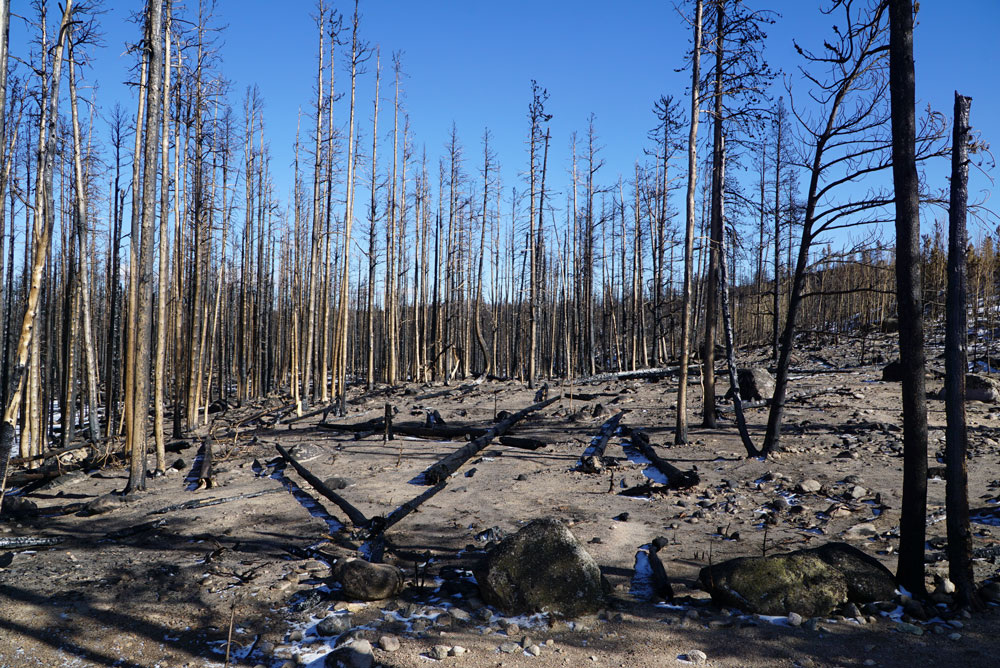
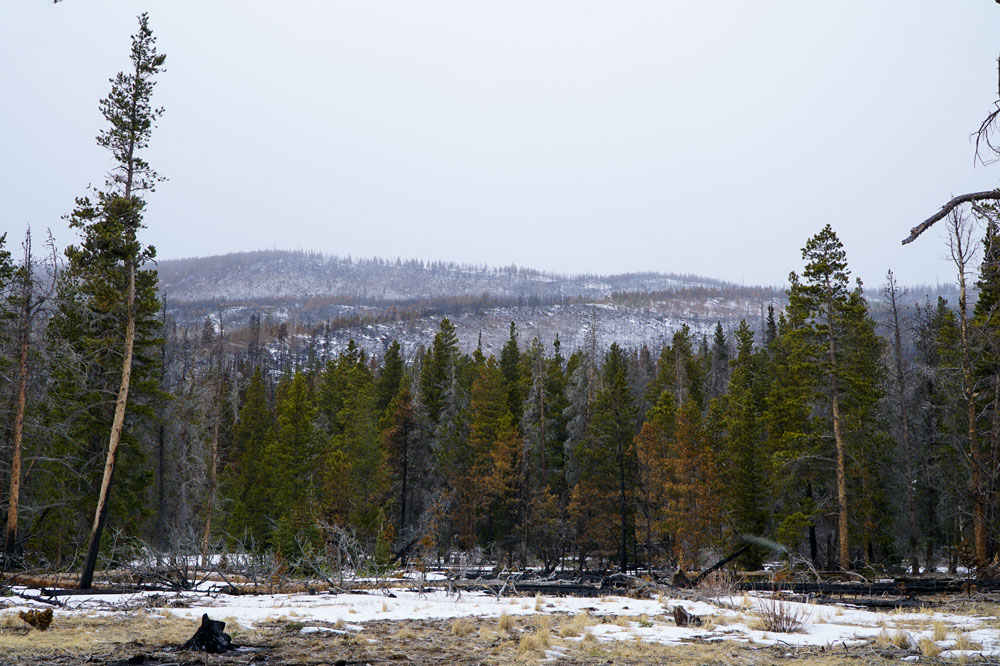
A larger benefit for all
The long-term research and teaching initiative will be important for understanding how vegetation grows and changes over time, as well as how managers can use this data to decide when management efforts are needed. These methods and corresponding information can also be extended to establish vegetation monitoring across all vegetation types and disturbance conditions.
This greater initiative opens up the possibility for new interdisciplinary collaborations across CSU and the state. Academic departments across scientific disciplines can find common ground. Partnerships and collaborations with other Warner College units such as the Colorado State Forest Service and Colorado Forest Restoration Institute will be strengthened. Opportunities to work with managers from the Arapaho-Roosevelt National Forest and the ability to connect with the national Adaptive Silviculture for Climate Change program led by FRS Department Head Linda Nagel are also on the table.
Croft said he is amazed that his own idea complemented these greater efforts in Warner College. His CSU Mountain Campus experience a few years ago initially taught him about conducting field work in these ecosystems and gave him life-long friends, the same ones that sat around the kitchen table with him last fall.
“It came full circle to have all this support,” Croft said. “We’ve all felt a special attachment to that place, and to see and hear it burn was heartbreaking. This project helps me give back and set-up something that lives beyond me.”